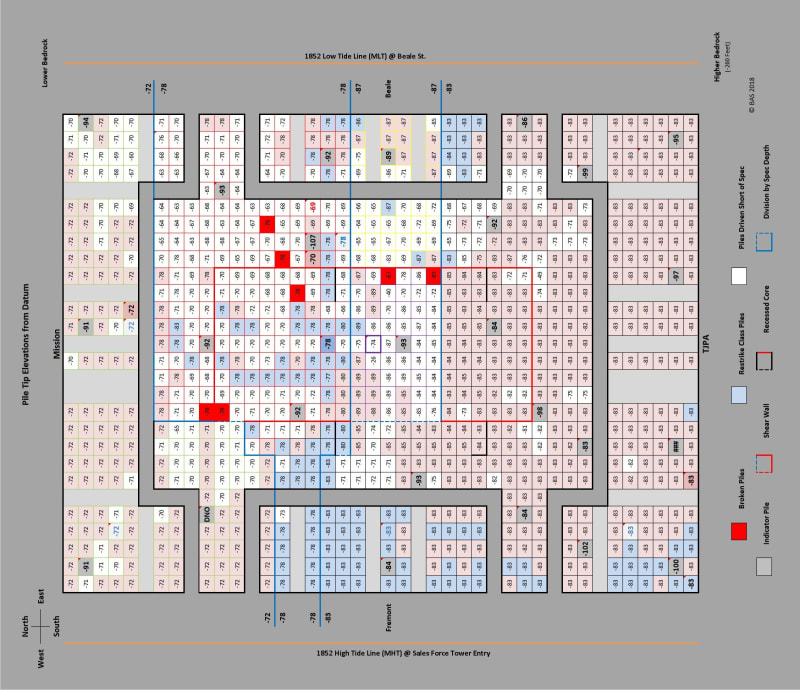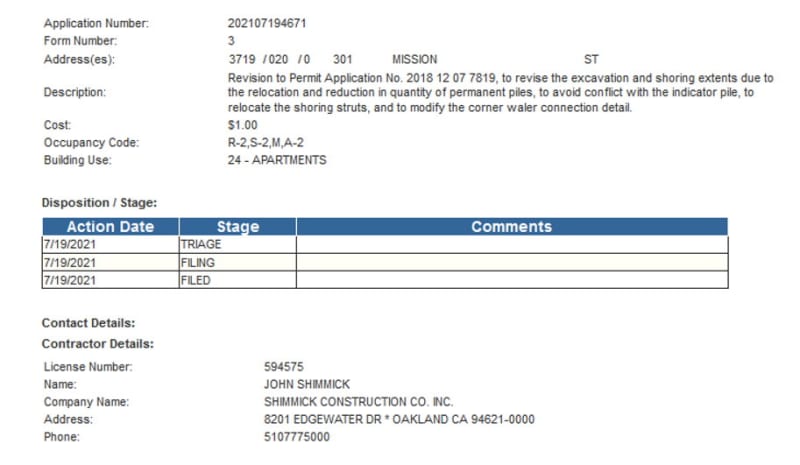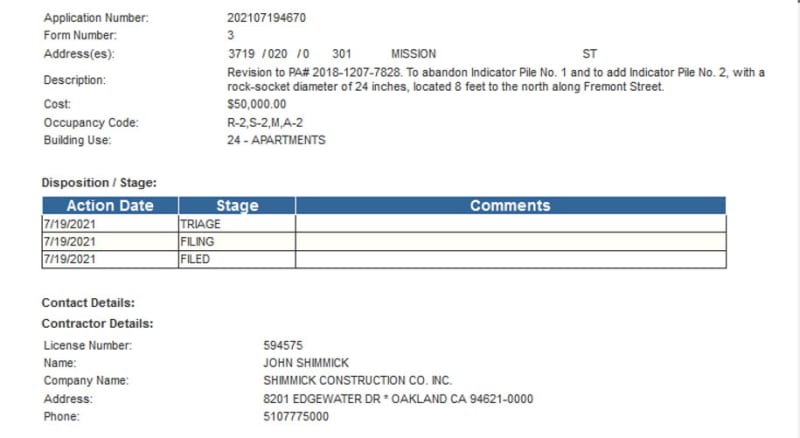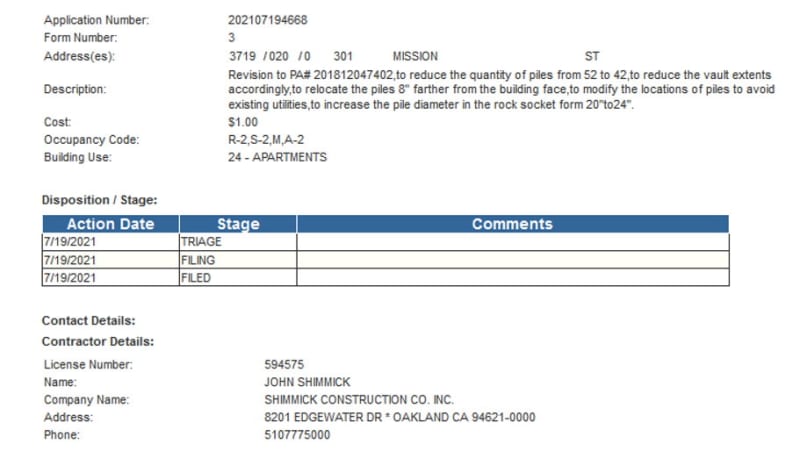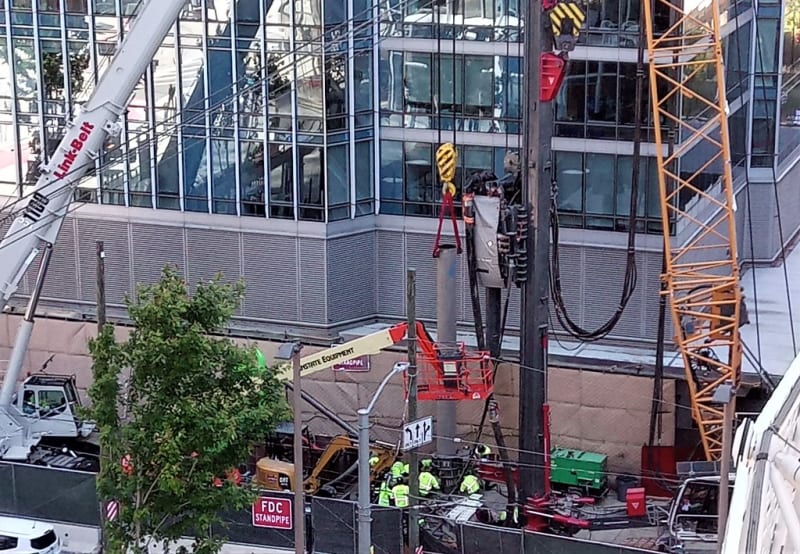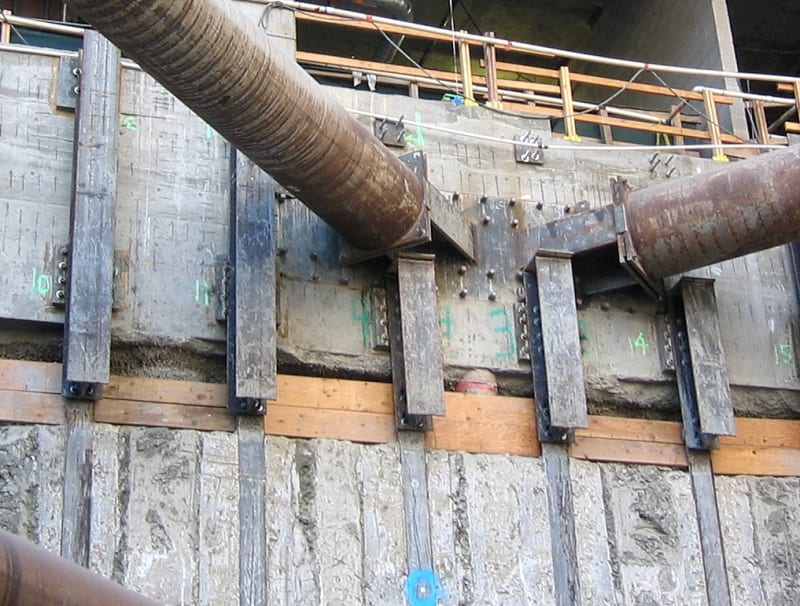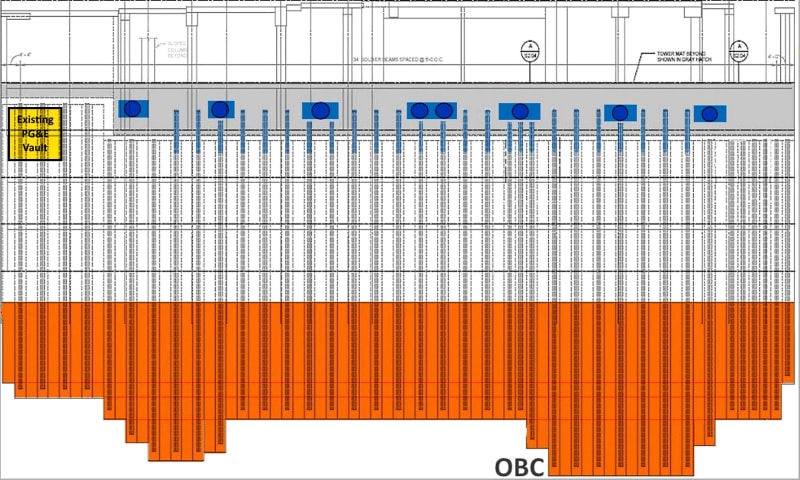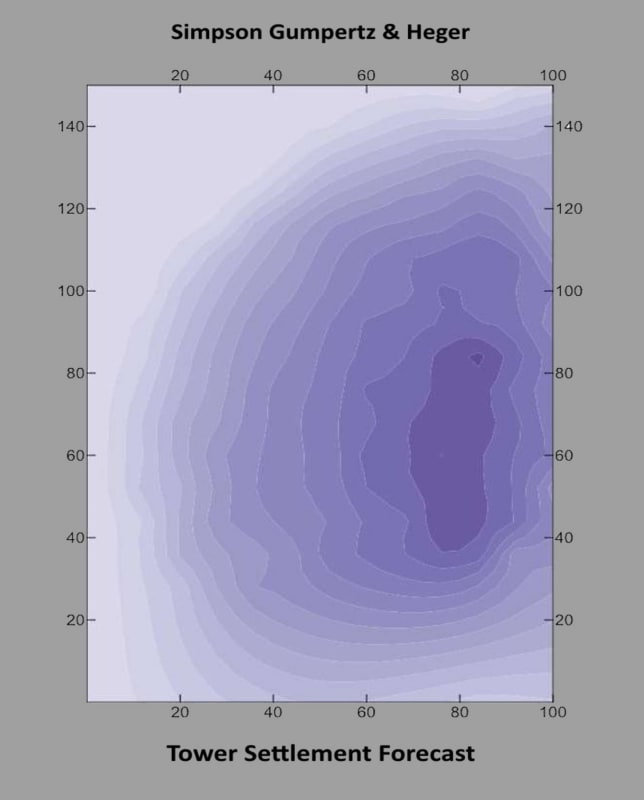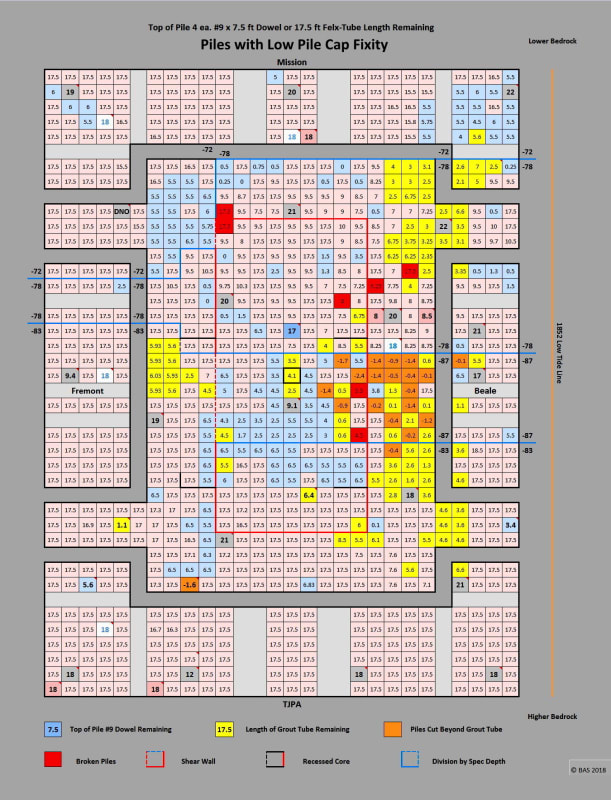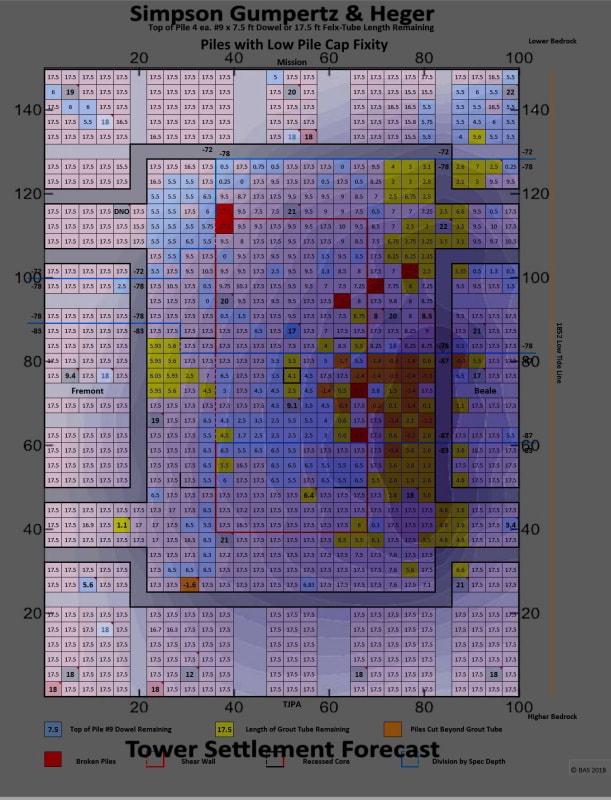I suppose I could have elaborated more on the document link I posted. It is from the Peer Review done by Hardip Pannu during the construction of the tower and the subsequent testing of Baugrid.
The SFDBI letter on page 54 of the pdf. explains that the results of testing of Baugrid showed that it would not be equal to a 1:1 replacement. Hardip Pannu & UCB Prof. Jack Moehle subsequently wrote a Peer Review letter of acceptance of Baugrid based on
Performance-Based Design.
Over and over Millennium Partners, DeSimone & Webcor AND later SG&H & the city's own 2017 301 Mission Seismic Safety Review Peer Review panel have described the tower as Prescriptive-Based (Code) Design. It just isn't so. All the vertical elements & tie-beams are built with Baugrid. The tower was 16 floors & 19 core levels up when the test results were finally determined.
Naturally, SFDBI did not retain the 4 binders of Superstructure calculations nor the 2 binders from Baugrid Peer Review. There are other elements that push this building into the Performace-Based catagory, including the 1st such use of 10,000psi concrete, along with a SCC admixture. Also, throughout the original construction Peer Review, Hardip Pannu of Middlebrooke-Louie, is asked to perform Non-linear analysis to resolve issues which break from ACI & the building 1997UBC/SF2001 code.
A geotechnical engineer, Laurence B, Karp, wrote to SFDBI regarding the Lera/Engeo "symmetrical upgrade" vs the SG&H/Slate asymmetrical (Perimeter Pile Upgrade)
Link.
From his website page "Millennium Tower Debacle" I gather that Mr. Karp was working on behalf of Jerry Dodson, an toer condo owner/engineer/attorney, who was part of one of two major litigation groups of tower residents. Jerry Dodson was of a mind that Millennium Partners & SFDBI were the parties principally responsible for poorly performing tower. You can find DeSimone's 4 volume foundation calculations & Treadwell & Rollos 2 geotechnical reports on his website. The second of the 4 volumes includes more of Hardip Pannu's peer review communications with DeSimone and reveals a greater extent to Prof. Jack Moehle's 'Consultant Work' on the project.
There were obvious inconveniences to the symmetrical pile upgrade and also an extended time element. The symmetrical plan called for installing piles down through the mat, first to the west side of the tower/core, to halt settlement and reverse the tilt; followed by installing the remaining piles to the east side of the tower/core, at a later date (years). Then a smear campaign was initiated to inflate the cost of the Lera/Engeo proposal. It maybe that the figure that went from $100-150 million to $450 million in the press was subsequently used to arrive at a settlement figure; wherein the class-action members get to devy up the 'undisclosed amount' that goes beyond the cheaper SG&H retrofit.
One of the entries to the Engineering Design Review Team's Comment Log (posted above Feb 25 2021) inquired about the results of Lera/Engeo's investigation of the current relationship between the tower podium shoring wall and the bottom of the towers mat foundation. The gist is that if the tower tilts back to the east by 2 inches, it will come to rest on the shoring wall. SG&H response was that the weight of the tower would then cause the 3 foot think 180 foot long 90 foot deep shoring was to settle. The 'experts' of the Engineering Design Review Team seemed satisfied with this answer, while completely ignoring that it results in an entirely new seismic condition. Just imagine a 10 foot thick concrete trampoline.
The 2017 City of San Francisco's Peer Review of SG&H's investigations resulted in a report by Standford Prof. Gregory Deierlein which stated that
all the deformation of the mat foundation took place before the end of 2009. The year the building was finished & open for occupant.
Millennium Tower's HOA hired Cotton-Shires geotechs in late 2016 to examine the building and while we don't know what was specifically said at the meeting that followed, resident Pamela Buttery later exclaimed to news reporters; that 'they had been told by the engineer (Cotton-Shires), that
the tower was too heavy for its foundation'. Of course Millennium blames dewatering but the Old Bay Clay doesn't give up its water to freely and is 90 feet bgs. And then the TJPA & Saleforce Tower used Cut-Off shoring walls. Post construction settling is the result of deformation of the Old Bay Clay. Nobody involved disputes this.
It needs to be remembered that when the tower was only 11 or 12 floors up, Webcor tied the east side of the foundation to the tower/podium shoring wall and then proceeded to stack 30 more floors on the tower (131 million pounds). All the while excavating a 56 ft deep hole in the ground immediately adjacent to the tower. From court records it is seen in emails that Webcor notified Treadwell & Rollo that the tower had shifted to the east shortly after tying the tower to the shoring wall. So the tower was sinking, drifting and the foundation tied to the wall by 25 each H-beams tied to the shoring walls soldier piles. Ron Hamburger is wrong if he thinks the shoring wall will settle if the tower comes to rest on the shoring wall. It has already borne a good deal of the tower's weight. Obviously not the entire 131 Million pounds was carried by the shoring wall.
I think it is safe to say that everything that is wrong with the tower became manifest during it construction.
From my post of May 26 2021, linking to a presentation by Ron O. Hamburger at the Univ. of Minnesota; I extracted the SG&H's forecasted settlement map and I overlaid it onto my Low Pile-to-Mat Fixity map, which I built in Excel. It is concerning. In a discussion before the SF Government & Oversight Committee's Hearings into the 301 Mission St. settling, the chair of the city's Peer Review team, Gregory Deierlein, stated that previous investigations by SG&H had not looked at the piling, so that was something they wanted to have reviewed. SG&H got the reinforcement in the top of the piles completely wrong. They is a worrying cluster of piles just outside the south-south-east portion of the shear-wall/core and near the south-east super-column that have only half of their 8 each #9 rebar in the tops of the piles. These piles were driven to refusal with 3 to 6 broken piles within the area with piles of reduced pile-head rebar. And then their is the buried PG&E vault.
The piles that were driven to refusal short of their design elevation represent "Hard End-Bearing Piles" in a field of soft piles. At least two engineers have speculated that piles under the tower may already have been damaged and that was without knowing any of what I've written. Since the tower is only 2 inches above the tower/podium shoring wall (10 inches of settlement), then these piles have either settled with the Old Bay clay or something worse had happened to them.
I sent my concerns to SFDBI's Gary Ho and his Head of Plan Review...que the chirping crickets.

